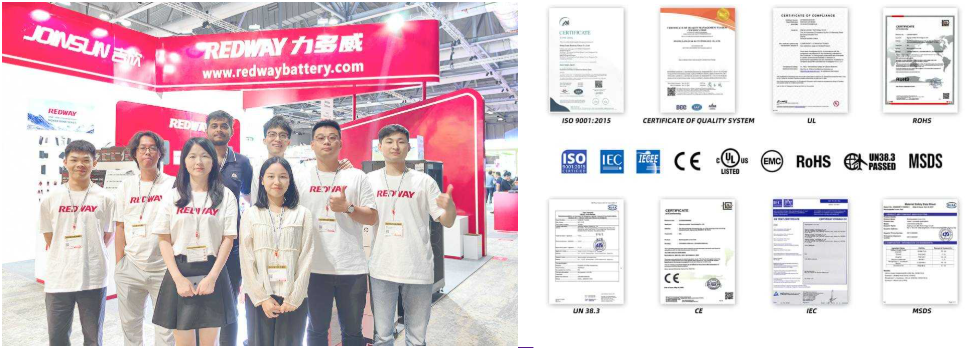Safely extinguishing a lithium-ion battery fire requires understanding its causes, identifying signs of trouble, and knowing the appropriate methods and tools for effective response. This comprehensive guide provides essential insights into handling lithium-ion battery fires and preventing potential hazards.
What Causes Lithium-Ion Battery Fires?
Lithium-ion battery fires can occur due to several factors:
- Overcharging: Leaving batteries plugged in beyond their charge capacity can lead to overheating and thermal runaway.
- Physical Damage: Punctures or impacts can compromise battery integrity, leading to short circuits.
- Manufacturing Defects: Poorly manufactured batteries may have internal flaws that increase the risk of failure.
Chart: Common Causes of Fires
Wholesale lithium golf cart batteries with 10-year life? Check here.
| Cause | Description |
|---|---|
| Overcharging | Leads to overheating and potential explosion |
| Physical Damage | Compromises battery integrity |
| Manufacturing Defects | Increases risk of internal failures |
How to Identify a Lithium-Ion Battery Fire?
Identifying a lithium-ion battery fire involves recognizing key warning signs:
- Swelling or Bulging: Physical deformation of the battery casing indicates potential failure.
- Unusual Odors: A burning smell or chemical odor may signal overheating or leakage.
- Visible Smoke: Any signs of smoke should prompt immediate action.
Chart: Warning Signs Overview
Want OEM lithium forklift batteries at wholesale prices? Check here.
| Warning Sign | Description |
|---|---|
| Swelling | Indicates potential failure |
| Unusual Odors | Suggests overheating or leakage |
| Visible Smoke | Immediate action required |
What Are the Best Methods to Extinguish a Lithium-Ion Battery Fire?
To extinguish a lithium-ion battery fire effectively:
- Evacuate the Area: Ensure everyone is at a safe distance before attempting to put out the fire.
- Use Appropriate Extinguishers: Employ ABC dry chemical extinguishers or foam extinguishers designed for flammable liquids.
- Do Not Use Water: Water can react with lithium and exacerbate the fire.
Chart: Extinguishing Methods
| Method | Description |
|---|---|
| Evacuate | Ensure safety first |
| ABC Dry Chemical | Effective against lithium-ion fires |
| Foam Extinguisher | Suitable for flammable liquid fires |
What Types of Fire Extinguishers Are Effective Against Lithium-Ion Fires?
The types of fire extinguishers suitable for lithium-ion fires include:
- ABC Dry Chemical Extinguishers: Versatile and effective against various types of fires, including those involving lithium-ion batteries.
- Foam Extinguishers: These can smother flames and prevent re-ignition by cutting off oxygen supply.
Chart: Suitable Fire Extinguishers
| Extinguisher Type | Effectiveness |
|---|---|
| ABC Dry Chemical | Effective against multiple fire classes |
| Foam | Smothers flames and prevents re-ignition |
How to Safely Handle a Lithium-Ion Battery Fire?
Handling a lithium-ion battery fire safely involves:
- Assessing the Situation: Quickly evaluate the severity of the fire before taking action.
- Using Protective Gear: Wear gloves and goggles when approaching any potential hazards.
- Calling Emergency Services: If the fire is uncontrollable, evacuate immediately and call local emergency services.
Chart: Safe Handling Steps
| Step | Action |
|---|---|
| Assess Situation | Determine severity before acting |
| Use Protective Gear | Wear gloves and goggles |
| Call Emergency Services | Evacuate if uncontrollable |
What Precautions Can Prevent Lithium-Ion Battery Fires?
To prevent lithium-ion battery fires:
- Avoid Overcharging: Always use chargers designed for your specific battery type and avoid leaving them plugged in overnight.
- Inspect Regularly: Check batteries for signs of wear, damage, or swelling.
- Store Properly: Keep batteries in cool, dry environments away from flammable materials.
Chart: Prevention Tips Overview
| Precaution | Description |
|---|---|
| Avoid Overcharging | Prevents overheating |
| Inspect Regularly | Identifies potential issues early |
| Store Properly | Reduces risk by keeping batteries safe |
How Do Environmental Conditions Affect Lithium-Ion Battery Safety?
Environmental conditions significantly impact lithium-ion battery safety:
- Extreme temperatures can lead to overheating or reduced efficiency; ideal charging conditions are between 20°C – 25°C.
- High humidity levels can lead to corrosion in electrical components; ensure dry storage conditions.
Chart: Environmental Effects on Safety
| Condition | Impact on Safety |
|---|---|
| High Temperature | Risk of overheating |
| Low Temperature | Reduced efficiency temporarily |
What Innovations Are Emerging in Lithium-Ion Battery Technology?
Recent innovations in lithium-ion technology focus on enhancing safety and performance:
- Development of safer chemistries that minimize risks associated with thermal runaway.
- Smart charging technologies that monitor battery health and optimize charging processes.
Chart: Innovations Overview
| Innovation | Description |
|---|---|
| Safer Chemistries | Reduce risks associated with traditional designs |
| Smart Charging Tech | Monitors health and optimizes charging |
How to Dispose of Damaged Lithium-Ion Batteries Safely?
Proper disposal is crucial due to environmental concerns:
- Utilize recycling programs that reclaim valuable materials while minimizing waste.
- Follow local regulations regarding disposal methods; never throw them in regular trash.
Chart: Disposal Guidelines
| Disposal Method | Description |
|---|---|
| Recycling Programs | Recover valuable materials |
| Local Regulations | Follow guidelines for safe disposal |
Expert Views”Understanding how to manage lithium-ion battery fires effectively is essential for ensuring safety in both personal and professional environments,” states Dr. Alex Thompson, an expert in energy storage technologies.
FAQ Section
- What should I do if my lithium-ion battery catches fire?
- Evacuate the area immediately and use an appropriate extinguisher if safe; otherwise, call emergency services.
- Can I use water on a lithium-ion battery fire?
- No, using water can react with lithium and worsen the situation; use ABC dry chemical extinguishers instead.
- How can I prevent my lithium batteries from catching fire?
- Avoid overcharging, inspect regularly for damage, and store them properly away from flammable materials.
- What are the signs that my lithium battery is failing?
- Look for swelling, unusual odors, or any visible damage; these may indicate potential failure.





